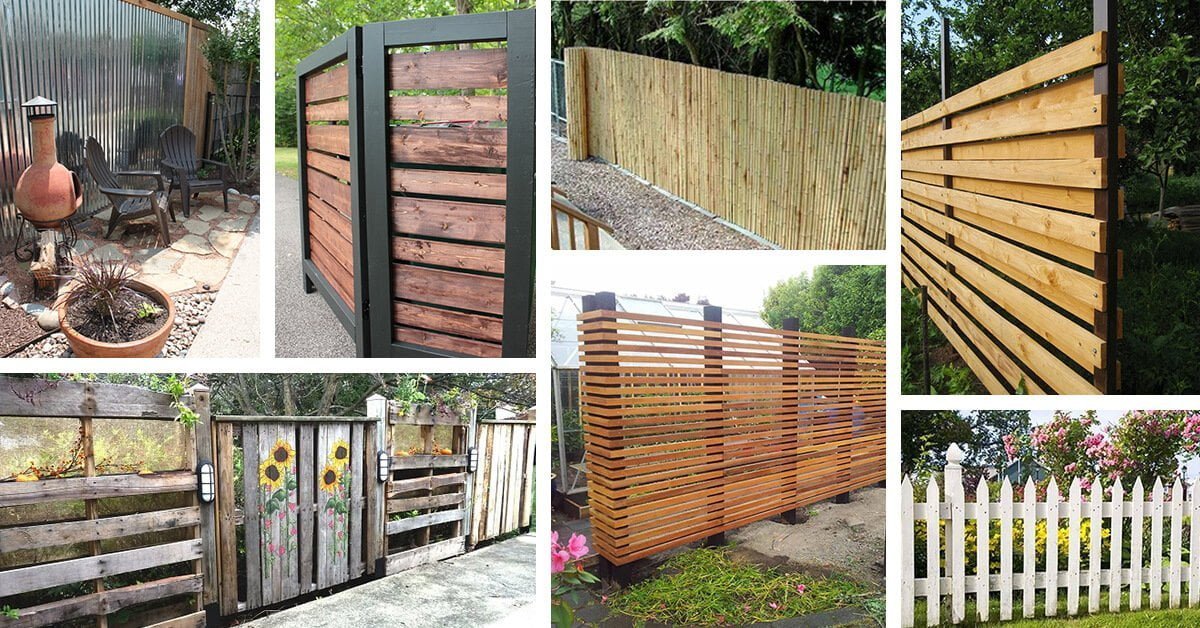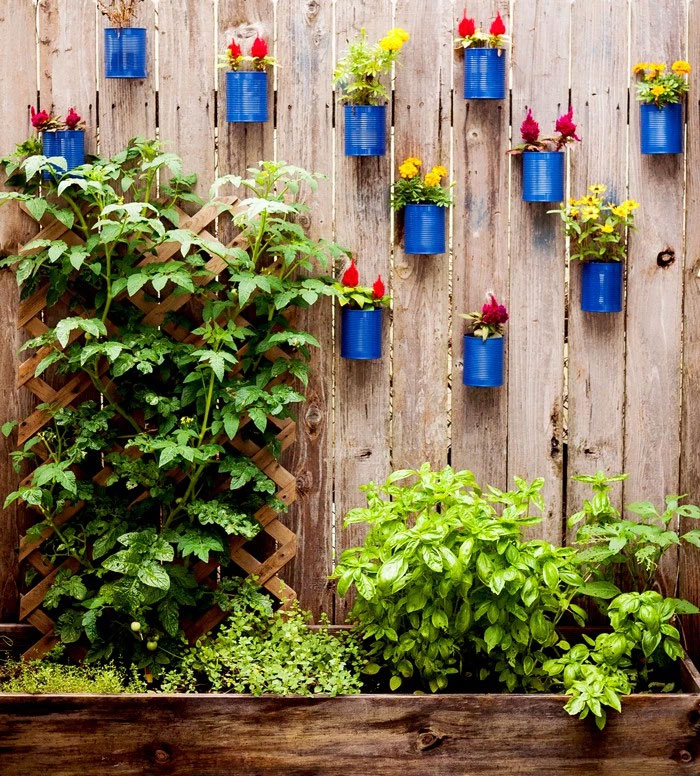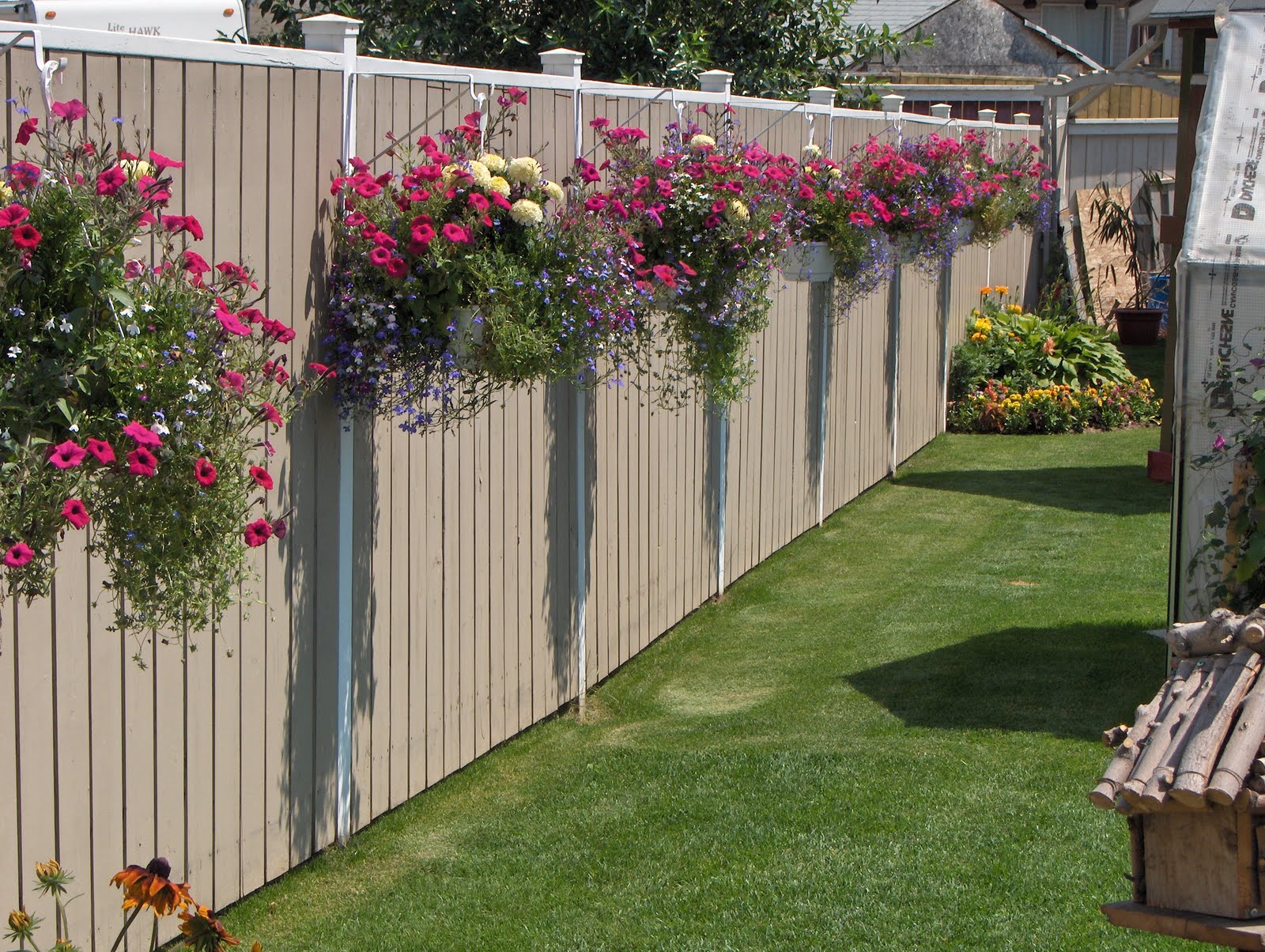Fences have long been a staple in garden design, serving practical purposes like security and boundary definition. However, they can also be creative assets that enhance the beauty and functionality of your outdoor space. In this article, we’ll explore innovative ideas for incorporating fences into your garden, along with tips on design, materials, and maintenance. We’ll also address some frequently asked questions to help you get started on your garden fencing journey.

Photo by: www.demilked.com
1. Decorative Fencing Options
1.1 Lattice Fencing
Lattice fences are not just functional; they can be a beautiful addition to any garden. These fences provide a semi-translucent barrier that allows light and air to pass through while maintaining privacy. You can climb flowering vines like clematis or jasmine up the structure, creating a stunning vertical garden.
1.2 Pallet Fencing
Utilizing reclaimed wooden pallets can create a rustic and eco-friendly fence. They are easy to assemble and can be painted or stained to match your garden’s aesthetic. Pallet fences work well as a backdrop for flower beds or as dividers between different sections of your garden.

Photo by: www.pinterest.com
1.3 Bamboo Fencing
Bamboo is an excellent choice for those looking for an exotic touch. It’s durable, sustainable, and adds a unique texture to your garden. Bamboo fencing can be used to create a zen garden atmosphere, beautifully complementing water features and ornamental plants.
1.4 Metal Fencing
For a modern look, consider using metal fencing. Options like wrought iron or aluminum can provide a sleek design while offering durability. Metal fences can be painted in various colors to match your garden theme, and they’re perfect for showcasing architectural plants or sculptures.

Photo by: www.demilked.com
2. Functional Fencing Ideas
2.1 Raised Garden Bed Fencing
If you have raised garden beds, consider incorporating fencing around them. This not only helps keep pests out but can also serve as trellises for climbing plants. A raised bed with a surrounding fence creates a defined space that enhances organization and accessibility.

Photo by: homebnc.com
2.2 Compost Bin Fencing
A fence can cleverly disguise your compost bin while keeping it contained. Opt for a wooden or bamboo fence that complements your garden’s style. This way, you can maintain an eco-friendly practice without compromising the aesthetic of your outdoor space.
2.3 Animal Barriers
If you have pets or wildlife issues, a sturdy fence is essential. Choose materials that are tall enough to keep animals out while providing a safe space for your pets. Additionally, consider adding a gate specifically designed for easy access to the garden.

Photo by: www.pinterest.com
3. Creative Fencing Solutions
3.1 Vertical Gardens
Transform your fence into a vertical garden by attaching planters or pockets for growing herbs and flowers. This not only maximizes space but also creates a living piece of art that can change with the seasons.
3.2 Painted Fences
Why settle for a plain fence when you can make it a canvas for your creativity? Painting your fence can add a splash of color and personality to your garden. Consider mural designs, geometric patterns, or even inspirational quotes to infuse life into your space.

Photo by: www.houselogic.com
3.3 Fences with Lighting
Installing lights along your fence can create a magical ambiance in the evenings. String lights, solar-powered lanterns, or spotlights can highlight specific areas of your garden, making it inviting and enjoyable after sunset.
4. Maintenance Tips for Garden Fences
4.1 Regular Cleaning
Keep your fence looking fresh by cleaning it regularly. Remove dirt, mildew, and debris with a gentle scrub and a solution of water and mild soap. This simple maintenance can prolong the life of your fence.

Photo by: www.demilked.com
4.2 Repairing Damage
Inspect your fence periodically for any signs of wear or damage. Promptly repair any broken panels or loose boards to prevent further deterioration. For wooden fences, consider applying stain or sealant to protect against the elements.
4.3 Seasonal Care
Depending on your climate, seasonal care may be necessary. In winter, check for snow accumulation that could weaken the structure. In spring, treat your fence with a protective finish to prepare for the summer sun.

Photo by: www.pinterest.com
FAQ Section
Q1: What type of fence is best for a small garden?
A: For small gardens, consider using lattice or bamboo fencing as they don’t overwhelm the space. Opting for vertical designs can also help save ground space while adding height.
Q2: How can I make my fence more private?
A: You can enhance privacy by choosing tall fencing materials and adding climbing plants or privacy slats. Curtains or outdoor fabric can also be hung for additional coverage.

Photo by: coolcreativity.com
Q3: Are there eco-friendly fencing options?
A: Yes! Look for recycled materials such as reclaimed wood or bamboo, which are sustainable and add character to your garden.
Q4: How do I choose the right color for my fence?
A: Consider the overall theme of your garden and the colors of your plants. Neutral tones work well with most landscapes, while bold colors can add a pop of personality.

Photo by: www.diys.com
Q5: How often should I paint or stain my fence?
A: It’s advisable to repaint or restain your fence every 3 to 5 years, depending on the material and exposure to weather conditions. Regular maintenance will keep it looking fresh.
Conclusion
Fences can do more than just mark boundaries—they can serve as an extension of your garden’s personality and functionality. By exploring unique ideas for fencing, you can transform your outdoor space into a vibrant, inviting area that reflects your style. From decorative to functional, the right fence can enhance your garden while providing the necessary practicality. Embrace your creativity and make your garden a place of beauty, comfort, and inspiration.
By implementing these ideas and maintaining your fencing, you can ensure that your garden remains a cherished retreat for years to come. Happy gardening!
